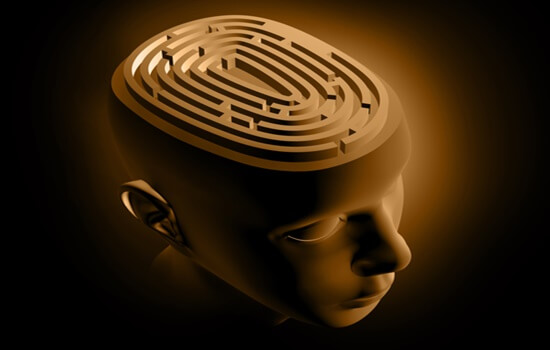Chemobrain, a Side Effect of Chemotherapy

Written and verified by the psychologist Valeria Sabater

Today’s oncological treatments are still very aggressive. Although in many cases the cancer is curable, there are side effects from treatment that are hardly ever talked about. Some of those side effects are cognitive impairment, low concentration or memory loss. These are common side effects of what is known as chemobrain.
For years professions compiled clinical documentation and studies related to this phenomenon were to record a condition that most don’t know about. When a person survives cancer, they have a new battle ahead. They must now deal with what comes after the treatment. Those symptoms can be physical and psychological.
The well know symptoms after treatment such as exhaustion, weakened immune system, digestive problems, weakness, infections, bone loss and chills now have company. We’re talking about brain deterioration. This shows up in cognitive processes such as attention, problem solving, memory, etc.

Chemobrain, mental fog after chemotherapy
We often define cancer as a battle. But for many it is a true test of strength and not just about following treatment based on chemotherapy. Cancer treatment may also include surgery, pharmacological treatments, radiotherapy and immunotherapy.
Professions often tell patients that everyone reacts differently to certain treatments. However, there are some side effects that the majority experience. Chemobrain is one of them. It is an exhausting physical consequence that many patients associate with the stress and anxiety of cancer itself.
However, as clinical studies show, chemobrain is a direct consequence of the treatment itself. It affects about 80% of patients. Let’s look at the data below.
Living with chemobrain: effects and characteristics
- Research shows that the cognitive areas most often affected by chemotherapy are visual and verbal memory, attention and psychomotor functioning.
- We know that each type of cancer receives a certain treatment. Depending on the patient, the duration and intensity of the treatments vary. However, studies show that practically all patients who undergo chemo experience cognitive damage. Thus, as expected, the longer and more intense the treatment, the greater the damage. The effect is cumulative.
- Patients usually experience problems remembering dates and appointments, problems remembering common words and ending sentences.
- It is also common to have problems multitasking. Talking on the phone while getting a glass of water or staying oriented while walking can become a problem. Performing this type of activity after chemo is very difficult and frustrating.
- Upon observation they are also disoriented and slow to react. After chemo the world becomes more complex. Patients are more “tuned out” when it comes to reacting to common and familiar things.

Chemobrain: treatments and how to reverse it
As stated before, surviving cancer is an wonderful achievement. It is full of happiness and hope. However, after the curtain closes on one stage, it opens on another. In the second stage, self care is more important than ever. Patients must find natural, psychological and even spiritual approaches the can help to reverse the damaging effects of the disease and its treatment.
Keys to optimize brain function after chemo
The answer to whether it is possible to reverse the negative effects that chemo has on the brain is simple. Yes, it is. However, cognitive rehabilitation requires time, effort and a multifaceted approach.
- Several drugs aimed at reversing the neurological effects of chemo are in the testing stage. However, currently there is no such drug on the market that is 100% effective in doing so.
- Herbal treatments such as ginseng and ginko biloba show positive effects in the reversal of some of the damage.
- Also, patients are encouraged to find their own cognitive rehabilitation activities. Today we have multiple apps and programs on our phones and computers. Some of them exercise out memory and concentration. All of those can be very useful.
- Professionals also advise patients to use an agenda to schedule activities. They recommend that patients schedule small tasks sequentially at first before they try multitasking. Trying to do more than one thing at a time creates anxiety and low self-esteem if they fail.
- On the other hand, and no less important, they also need adequate support from family and friends. Their support system needs to be close, understanding and most of all, aware of the symptoms associated with chemobrain.

In conclusion, ideally each patient should have access to adequate cognitive rehabilitation focused on this clinical condition. However, as treatments progress, so too will oncological rehabilitation therapy aimed at improving the quality of life for those who have overcome cancer. At least we hope so.

Today’s oncological treatments are still very aggressive. Although in many cases the cancer is curable, there are side effects from treatment that are hardly ever talked about. Some of those side effects are cognitive impairment, low concentration or memory loss. These are common side effects of what is known as chemobrain.
For years professions compiled clinical documentation and studies related to this phenomenon were to record a condition that most don’t know about. When a person survives cancer, they have a new battle ahead. They must now deal with what comes after the treatment. Those symptoms can be physical and psychological.
The well know symptoms after treatment such as exhaustion, weakened immune system, digestive problems, weakness, infections, bone loss and chills now have company. We’re talking about brain deterioration. This shows up in cognitive processes such as attention, problem solving, memory, etc.

Chemobrain, mental fog after chemotherapy
We often define cancer as a battle. But for many it is a true test of strength and not just about following treatment based on chemotherapy. Cancer treatment may also include surgery, pharmacological treatments, radiotherapy and immunotherapy.
Professions often tell patients that everyone reacts differently to certain treatments. However, there are some side effects that the majority experience. Chemobrain is one of them. It is an exhausting physical consequence that many patients associate with the stress and anxiety of cancer itself.
However, as clinical studies show, chemobrain is a direct consequence of the treatment itself. It affects about 80% of patients. Let’s look at the data below.
Living with chemobrain: effects and characteristics
- Research shows that the cognitive areas most often affected by chemotherapy are visual and verbal memory, attention and psychomotor functioning.
- We know that each type of cancer receives a certain treatment. Depending on the patient, the duration and intensity of the treatments vary. However, studies show that practically all patients who undergo chemo experience cognitive damage. Thus, as expected, the longer and more intense the treatment, the greater the damage. The effect is cumulative.
- Patients usually experience problems remembering dates and appointments, problems remembering common words and ending sentences.
- It is also common to have problems multitasking. Talking on the phone while getting a glass of water or staying oriented while walking can become a problem. Performing this type of activity after chemo is very difficult and frustrating.
- Upon observation they are also disoriented and slow to react. After chemo the world becomes more complex. Patients are more “tuned out” when it comes to reacting to common and familiar things.

Chemobrain: treatments and how to reverse it
As stated before, surviving cancer is an wonderful achievement. It is full of happiness and hope. However, after the curtain closes on one stage, it opens on another. In the second stage, self care is more important than ever. Patients must find natural, psychological and even spiritual approaches the can help to reverse the damaging effects of the disease and its treatment.
Keys to optimize brain function after chemo
The answer to whether it is possible to reverse the negative effects that chemo has on the brain is simple. Yes, it is. However, cognitive rehabilitation requires time, effort and a multifaceted approach.
- Several drugs aimed at reversing the neurological effects of chemo are in the testing stage. However, currently there is no such drug on the market that is 100% effective in doing so.
- Herbal treatments such as ginseng and ginko biloba show positive effects in the reversal of some of the damage.
- Also, patients are encouraged to find their own cognitive rehabilitation activities. Today we have multiple apps and programs on our phones and computers. Some of them exercise out memory and concentration. All of those can be very useful.
- Professionals also advise patients to use an agenda to schedule activities. They recommend that patients schedule small tasks sequentially at first before they try multitasking. Trying to do more than one thing at a time creates anxiety and low self-esteem if they fail.
- On the other hand, and no less important, they also need adequate support from family and friends. Their support system needs to be close, understanding and most of all, aware of the symptoms associated with chemobrain.

In conclusion, ideally each patient should have access to adequate cognitive rehabilitation focused on this clinical condition. However, as treatments progress, so too will oncological rehabilitation therapy aimed at improving the quality of life for those who have overcome cancer. At least we hope so.
This text is provided for informational purposes only and does not replace consultation with a professional. If in doubt, consult your specialist.







